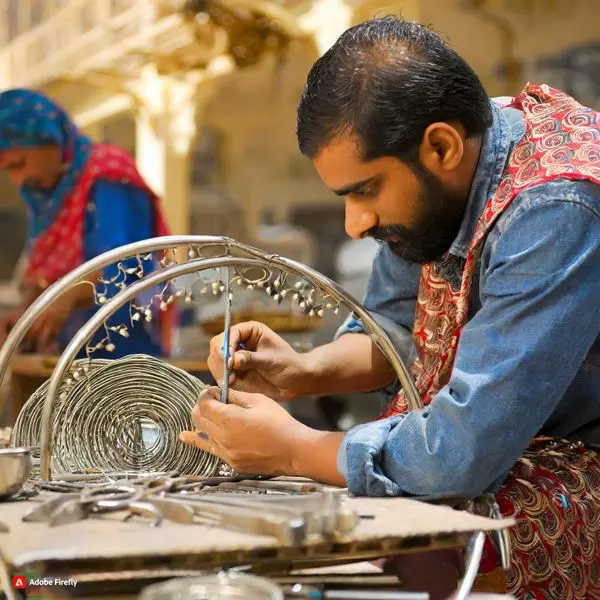India’s diverse cultural landscape has long been a canvas for exquisite craftsmanship, with each region nurturing and promoting unique artistic traditions. In the heart of the Deccan region, the small town of Bidar has been a cradle for a centuries-old metalwork craft known as Bidri, a testament to the rich heritage of the area.
Origin of Bidri Metalwork:
The roots of Bidri metalwork are intertwined with the historical tapestry of the Deccan region. While some sources attribute its introduction to Khaja Mohiuddin Chishti and his followers a millennium ago, others date its origins to the 14th century in Bidar, Karnataka. The craft flourished under the Bahmani Sultanate, where skilled artisans melded local techniques with Persian influences. Historians debate whether it originated in the 16th century as a byproduct of Indo-Islamic culture. Regardless, Bidri metalwork evolved over time, adapting techniques and designs under the patronage of different rulers.
The Process of Making Bidri Artefacts:
At the core of Bidri work is its distinctive composition – a zinc-copper alloy acquiring its iconic black hue through oxidation. Craftsmen from Bidar traditionally use soil from a 15th-century fort mixed with potassium nitrate, ammonium chloride, and water to create a paste. Applied to the heated brass surface, it results in a striking black background. Skilled artisans then chisel intricate patterns, creating a captivating contrast with the dark base. The finished product showcases a blackened appearance with silver inlay work.
Bidri metalwork, classified into Teh nashin, Aftabi, Tarkashi, and Zar buland, draws inspiration from nature, folklore, and geometric patterns. Designs often feature floral motifs, intertwining vines, peacocks, and other animals, adorning utilitarian and decorative items such as hookahs, vases, boxes, and plates.
The Present:
While Bidri products can be acquired in Bidar and Hyderabad, the Salar Jung Museum in Hyderabad stands as a treasure trove for enthusiasts eager to delve into its history. With a collection spanning from the 16th to the 20th century, the museum showcases 600 pieces of Bidri craftwork. Renowned for its dark alloy and intricate silver inlay patterns, Bidri metalwork has found a contemporary resurgence.
Artisans in Bidar and Hyderabad have adapted traditional techniques to create modern pieces, extending the craft’s reach into jewelry, home decor, and fashion accessories. Recognizing its cultural significance, Bidri metalwork secured Geographical Indication (GI) registration to promote and protect its heritage. Today, this unique craft continues to thrive, bridging the gap between tradition and modernity.
Also Read: Memory In Microbes: Unraveling Intriguing Findings Of Bacterial Memory Storage












